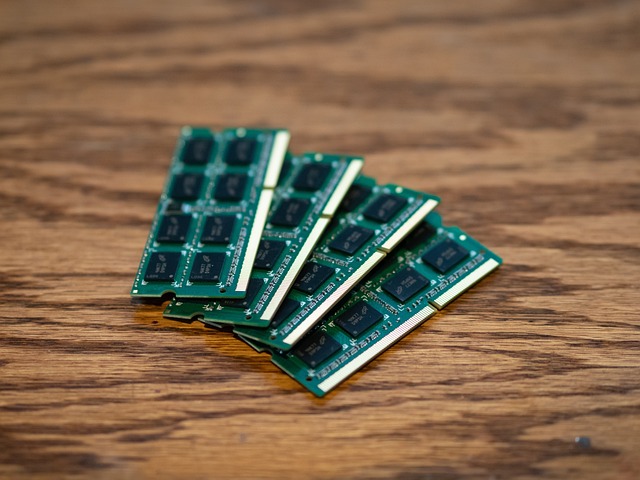The Speed Advantage of DDR4 RAM Over DDR3 RAM
Introduction:
The speed of computer components plays a vital role in determining the overall performance of a system.
The memory, also known as RAM (Random Access Memory), is one of the most important components when it comes to speed. DDR3 and DDR4 are the two most popular types of memory used in computers.
In this blog, I will be comparing DDR3 RAM and DDR4 RAM to see how much faster the latter is.
What is DDR3 RAM?
DDR3 (Double Data Rate 3) is a type of RAM that was introduced in 2007. It is the third generation of DDR memory, which is why it is called DDR3.
DDR3 memory operates at a clock speed of 800 MHz to 1600 MHz and transfers data on a bus that is 64 bits wide. It has a maximum theoretical bandwidth of 12.8 GB/s.
What is DDR4 RAM?
DDR4 (Double Data Rate 4) is the fourth generation of DDR memory and was introduced in 2014.
DDR4 memory operates at a clock speed of 2133 MHz to 4266 MHz and transfers data on a bus that is 64 bits wide. It has a maximum theoretical bandwidth of 17 GB/s, which is significantly higher than DDR3 memory.
Clock Speed:
One of the key differences between DDR3 and DDR4 memory is the clock speed.
DDR4 memory operates at a much higher clock speed than DDR3 memory. This higher clock speed allows DDR4 memory to transfer data faster, which in turn leads to improved performance.
DDR4 memory operates at a clock speed of 2133 MHz to 4266 MHz, while DDR3 memory operates at a clock speed of 800 MHz to 1600 MHz.
This means that DDR4 memory is roughly 2 to 4 times faster than DDR3 memory in terms of clock speed.
Bandwidth:
Another key difference between DDR3 and DDR4 memory is the bandwidth. Bandwidth refers to the amount of data that can be transferred in a given amount of time.
DDR4 memory has a higher bandwidth than DDR3 memory. DDR4 memory has a maximum theoretical bandwidth of 17 GB/s, while DDR3 memory has a maximum theoretical bandwidth of 12.8 GB/s.
This means that DDR4 memory is capable of transferring data faster than DDR3 memory.
Latency:
Latency is the amount of time it takes for the memory to respond to a request. DDR4 memory has lower latency compared to DDR3 memory.
Lower latency means that the memory can respond faster to requests, which leads to improved performance. DDR4 memory has a latency of 15 to 17 nanoseconds, while DDR3 memory has a latency of 9 to 10 nanoseconds.
This means that DDR4 memory is roughly 1.5 to 1.7 times faster than DDR3 memory in terms of latency.
Power Consumption:
DDR4 memory consumes less power than DDR3 memory. This is due to the fact that DDR4 memory operates at a lower voltage than DDR3 memory.
Lower power consumption means that DDR4 memory is more energy-efficient and generates less heat. This is important for systems that are designed to be compact and have limited cooling options.
DDR4 memory operates at a voltage of 1.2 volts, while DDR3 memory operates at a voltage of 1.5 volts. This means that DDR4 memory is roughly 20% more energy-efficient than DDR3 memory.
Price:
DDR4 memory is generally more expensive than DDR3 memory. This is due to the fact that DDR4 memory is a newer and more advanced technology.
However, the price difference between DDR3 and DDR4 memory has been decreasing over time as become increasingly popular due to its improved performance and energy efficiency.
As more systems are being designed to take advantage of DDR4 memory, the price difference is expected to continue to decrease.
Compatibility:
Another factor to consider when choosing between DDR3 and DDR4 memory is compatibility. DDR4 memory is not compatible with systems that use DDR3 memory, and vice versa.
This means that if you have a system that uses DDR3 memory, you cannot upgrade to DDR4 memory without upgrading the entire system. On the other hand, if you have a system that is designed to use DDR4 memory, you cannot use DDR3 memory as a substitute.
Conclusion:
In conclusion, DDR4 memory is faster than DDR3 memory in terms of clock speed, bandwidth, and latency. DDR4 memory also consumes less power and is more energy-efficient than DDR3 memory.
Although DDR4 memory is generally more expensive than DDR3 memory, the price difference has been decreasing over time and the improved performance and efficiency of DDR4 memory can often outweigh the higher cost.
When choosing between DDR3 and DDR4 memory, it is important to consider your system’s compatibility and the desired level of performance.
